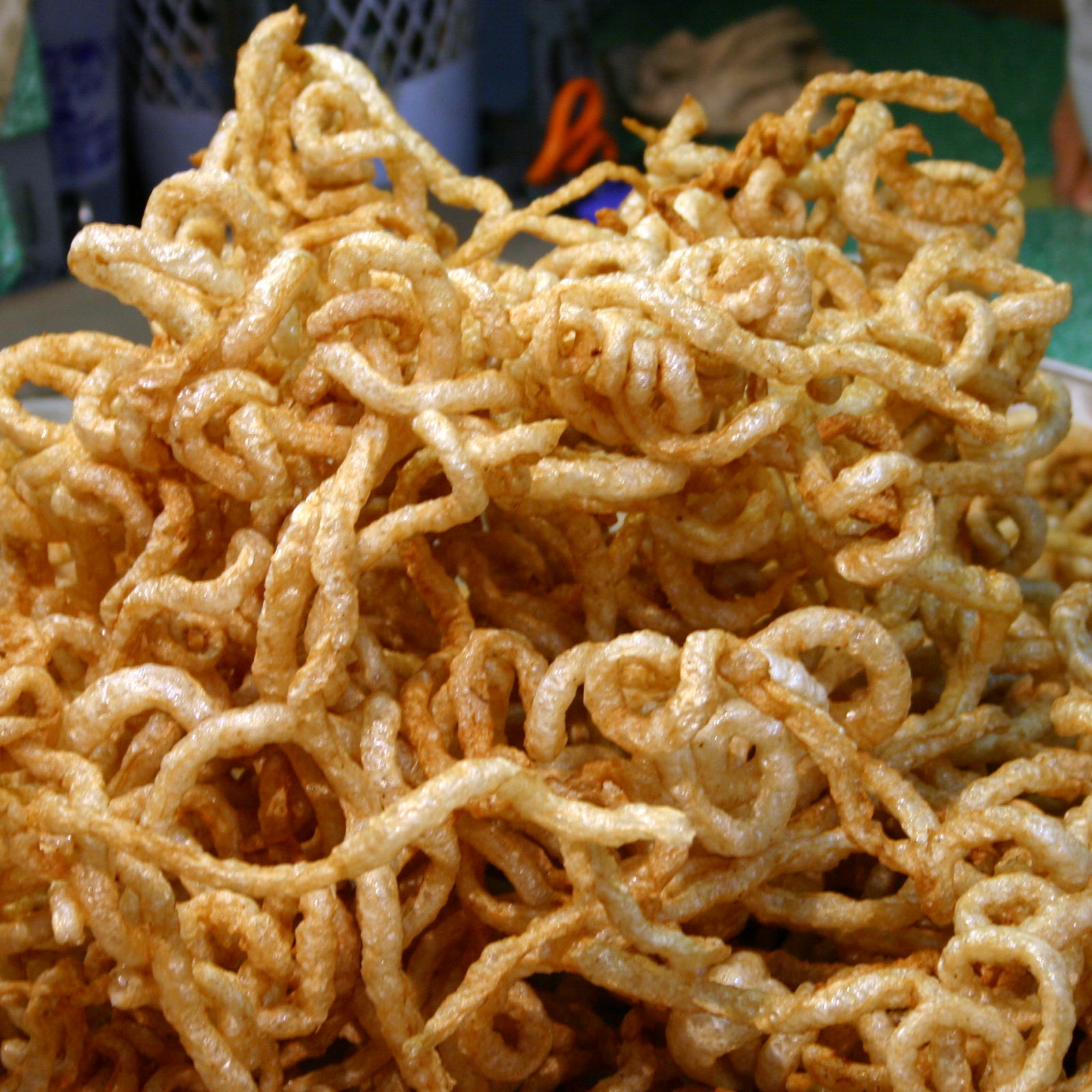You could easily get the impression that Thais are relatively unconcerned about their health. They often seem to eat so many things that – from a western perspective – don’t seem very healthy. However, most Thais I have known have been very concerned about their well-being, sometimes even obsessively so.

But when it comes to deciding between “good for you” and “tastes good” delicious wins out almost every time. That almost certainly explains the popularity of fried pork skins, called kap moo in Thai. This speciality of Chiang Mai is made with pig skin cut in strips, cleaned and dried for a few days, then deep fried in hot oil, which puffs up the skins to resemble Styrofoam.
The Anusarn market is full of stalls selling freshly fried pork skins. You can see Thais visiting Chiang Mai purchasing large bags as big as bedroom pillows full of this delicacy. The market gets in full swing at night, just like the night bazaar.
In recounting his visit to Chiang Mai in 1885 and 1886, the British Resident Manager Ernest Satow recounts an encounter with something like today’s fried pork skin:
“On the 15th of January, I dined with the chief … Fried wafers of cow and of buffalo-hide were served with a sauce composed of fermented tea-leaves, pork fat, onions, and a fourth ingredient which I do not recollect. A pile of these wafers was placed between the chief and myself, and we dipped by turns into the same sauce-bowl. He was evidently pleased to find that I could eat them. You can offer no more delicate flattery to an oriental than to partake of his native food. Europeans, or at least Englishmen, generally turn up their noses and call it ‘beastly’, which is undiplomatic conduct to say the least of it. Though rather greasy, these preparations of skin were not unpalatable, especially a spongy variety which was well toasted.”
These days, the favoured sauce in which to dip your fried pork skins is a fiery hot chili dip made with Chiang Mai chilies.